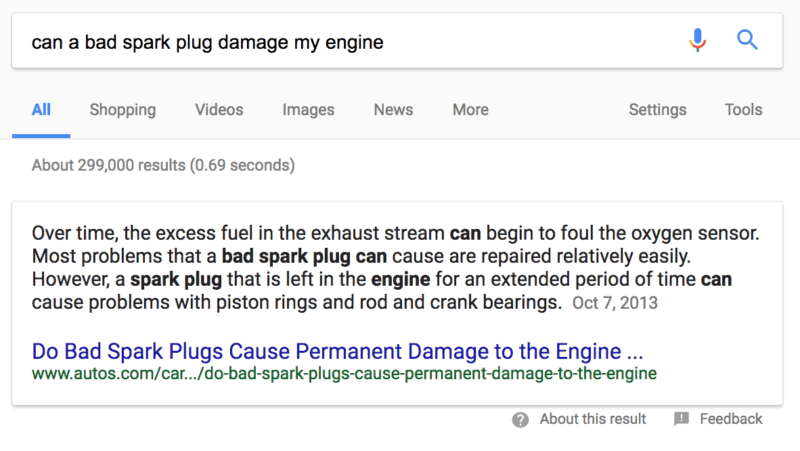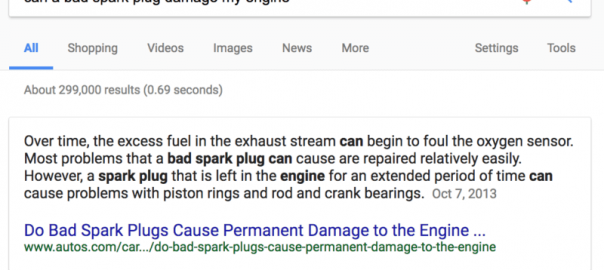Contributor Andrew Dennis (kinda) disagrees with a previously published SEL article and offers his view on why link building may be difficult.

Search Engine Land recently published a column by Julie Joyce about how we often overcomplicate link building, and when I read it, something surprising happened. I actually disagreed with her.

Well, I sort of disagree with her.
I do agree the process of securing a link, finding a site, contacting that site and getting a link is pretty straightforward. But I contend that if you want to achieve meaningful results with link building, matters are more complicated.
I see clients oversimplifying link building in terms of results all the time. They have a myopic view of link building and feel it is a simple math equation where increased input means increased output and success is determined by the number of links secured.
However, links are a means to an end; the intended results are more visibility, increased traffic and improved conversions. When the goal of link building is to drive search engine optimization (SEO) results instead of simply acquire a set number of links, link acquisition becomes much more complex.
Factors that can impede link-building success include:
- On-page and technical elements.
- Internal linking.
- Client or departmental complications.
These issues can impact link-building performance, making a link campaign convoluted when viewed through the lens of SEO results.

On-page and technical SEO
While links are vastly important to search visibility, backlinks only represent a portion of the SEO picture.
The best links in the world won’t achieve anything if they point to a site that’s a mess from a technical standpoint. There are a number of technical issues that could hamper your ability to drive organic search performance, including:
- Speed issues.
- Duplicate content.
- Page errors.
- Improper redirects.
- Broken links and images.
- Suboptimal uniform resource locator (URL) structure.
These factors affect crawling and indexation, which diminishes your external optimization — backlinks.
On-page optimization for the page you’re linking back to can either boost or hinder the SEO value of your links. Link quality and quantity are often the differentiators between ranking pages, but a well-optimized page has the advantage from the start.
Optimizing a page for important keywords with a targeted title and header tags is important, but don’t forget to optimize your page for searcher intent as well.
For example, if your page is targeting a question-based query, you should optimize your content for featured snippets Google often returns for these searches. Short, quick, clear answers typically perform best here.
Other considerations should include format, length and design. The best place to look for guidance on optimizing for intent is the relevant SERPs you’re targeting. If your page doesn’t come close to the quality (in terms of design, answering intent, preferred format and so on) of the ranking pages, your link acquisition efforts might be futile.
Your page should deserve to rank on its own merit. Links reinforce the value of your page to search engines. But if you’re securing links to a poorly optimized page, achieving desired results becomes tricky.
Internal linking
Internal link structure is often a forgotten part of link building and optimizing links for search.
Although internal links don’t have as much influence on search rankings as external links, they still play an important role and add another layer of complexity to a link campaign.
If you ignore internal links and focus solely on securing external links, you will be leaving equity on the table and making it harder to earn the results you want.
The internal link architecture of your website will determine how link equity is distributed throughout the site. If you’re not strategic with internal links, then the value from your external links might not benefit the important pages on your site.
Product pages are important to your business and have tremendous value for your site, but that value doesn’t necessarily translate to other sites and entice them to link. This is why you need internal links to direct link equity from linkable assets to product pages.
As Julie alluded to in her post, the process of securing links is simple, but the execution is difficult because you have to rely on someone else to put your link up.
With internal links, you’re the person putting the link up, at least in theory. If you’re an outside vendor or simply not in control of the website at your company, optimizing internal links can be frustrating.
While accounting for internal linking adds another level of complication to a link-building campaign, optimizing these links is integral to maximizing the search benefit of external backlinks.
Complications
Whether you’re an agency or an in-house SEO, dealing with bureaucracy and red tape can convolute even the most well-designed link campaigns.
There are many possible complications that can limit the success of a link campaign, some common issues include:
- Restrictions on target pages. Link acquisition needs to be targeted and strategic, but opportunities are missed when the best pages aren’t promoted.
- Micromanagement with outreach. Interference with outreach can negatively impact efficiency and efficacy.
- Slow approval process. Lag time during multiple approval processes can kill the momentum of a campaign.
- Limits on prospects. Limited prospect pools lead to limited links and results.
- Communication issues. Effective link building requires open and consistent communication.
- Lack of buy-in from upper management. Even successful campaigns can be failures if the C-suite doesn’t understand the value.
Bureaucracy can impact link building from beginning to end, and even after links are secured. This red tape complicates link acquisition, often making it more difficult than it needs to be.
Wrap-up
Okay, so I don’t really disagree with Julie! As SEOs and link builders, we do often overcomplicate link acquisition. In trying to explain this difference in strategy and tactics, we sometimes overthink link building and make it more confusing than necessary.
The process of finding a website, contacting them and securing a link is simple, but driving SEO results, beyond the number of links secured, quickly becomes more complicated.
There are a number of extenuating circumstances and outside forces that contribute to the complexities of managing a successful link campaign. Whether they are technical issues, suboptimal internal linking structure or restrictions on outreach messaging, securing results from link building is more complicated than securing the links.
Securing one link might be simple and straightforward, but understanding how that link supports a broader SEO and digital marketing strategy requires research, creativity, analysis and coordination.
[Article on Search Engine Land.]
Opinions expressed in this article are those of the guest author and not necessarily Marketing Land. Staff authors are listed here.
Marketing Land – Internet Marketing News, Strategies & Tips
(115)
Report Post







